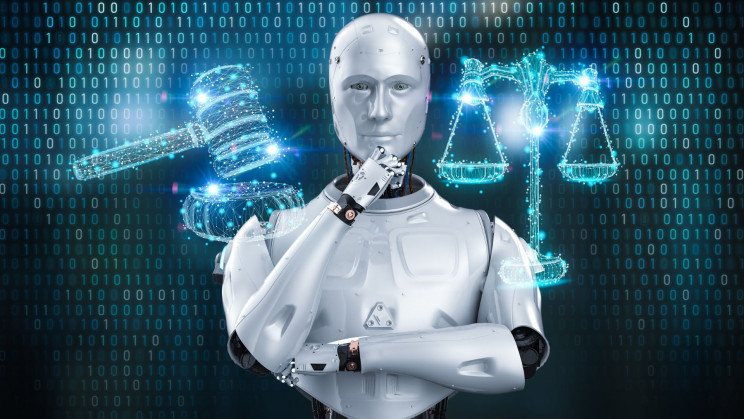10 Things You Are Not Told About Data Science

Many data scientists become disillusioned when they are hired for statistics and
machine learning, but instead find themselves being the resident “IT expert”
instead. This phenomena is not new and actually predates data science. Shadow
information technology (shadow IT) describes office workers who create systems
outside their IT department. This includes databases, dashboards, scripts, and
code. This used to be frowned on in organizations, as it is unregulated and
operating outside the IT department’s scope of control. However, one benefit of
the data science movement is it has made shadow IT more accepted as a necessity
for innovation. Rather than be disillusioned, a data scientist can gain
proficiency in SQL, programming, cloud platforms, web development, and other
useful technologies. After all, a data scientist works with data and that
implicitly can lead to IT-work. It can also make their work streamlined and more
accessible to others, and open up possibilities for statistical and machine
learning models.
The connected nature of smart factories is exponentially increasing the risk of cyber attacks
The research found that, for many organizations, cybersecurity is not a major
design factor; only 51% build cybersecurity practices in their smart factories
by default. Unlike IT platforms, all organizations may not be able to scan
machines at a smart factory during operational uptime. System-level visibility
of IIoT and OT devices is essential to detect when they have been compromised;
77% are concerned about the regular use of non-standard smart factory processes
to repair or update OT/IIOT systems. This challenge partly originates from the
low availability of the correct tools and processes, however 51% of
organizations, said that smart factory cyberthreats primarily originate from
their partner and vendor networks. Since 2019, 28% noted a 20% increase in
employees or vendors bringing in infected devices, such as laptops and handheld
devices, to install/patch smart-factory machinery. ... When it comes to
incidents, only a few of the organizations surveyed claimed that their
cybersecurity teams have the required knowledge and skills to carry out urgent
security patching without external support.
Google’s Powerful Artificial Intelligence Spotlights a Human Cognitive Glitch

The human brain is hardwired to infer intentions behind words. Every time you
engage in conversation, your mind automatically constructs a mental model of
your conversation partner. You then use the words they say to fill in the
model with that person’s goals, feelings and beliefs. The process of jumping
from words to the mental model is seamless, getting triggered every time you
receive a fully fledged sentence. This cognitive process saves you a lot of
time and effort in everyday life, greatly facilitating your social
interactions. However, in the case of AI systems, it misfires – building a
mental model out of thin air. A little more probing can reveal the severity of
this misfire. Consider the following prompt: “Peanut butter and feathers taste
great together because___”. GPT-3 continued: “Peanut butter and feathers taste
great together because they both have a nutty flavor. Peanut butter is also
smooth and creamy, which helps to offset the feather’s texture.” The text in
this case is as fluent as our example with pineapples, but this time the model
is saying something decidedly less sensible.
VMware report finds org modernization cannot succeed without observability

Enterprises have evolved their cloud strategies to multicloud environments and
are adopting more containers, microservices and cloud-native technologies.
This is creating increasingly distributed systems, making it harder to gain a
comprehensive view into how they’re performing, Weiss said. As a result,
legacy monitoring tools are obsolete for modern applications. “The reason for
that is the change to cloud computing multi-services. Together with the amount
of data that is being generated in these applications, you can’t cope with it
anymore,” Weiss said. Monitoring merely collects data from the system and
alerts admins to something being wrong. Observability goes beyond monitoring
to interpret the data, providing answers on why something is wrong and how to
fix it, allowing teams to pinpoint the root cause, minimize downtime and
increase operational efficiency. “Previously, the solution was to put an agent
on the server that can do everything, collect everything – but there is no
place to put the agent anymore,” Weiss told VentureBeat. “Services are
becoming very volatile. They’re disappearing. They’re here now, they’re not
here tomorrow. I’m not even talking about serverless. So, that’s a change that
is trending.”
A breakthrough algorithm developed in the US can predict crimes a week ahead

The concept might sound interesting, but the actual application was dodgy. As
investigations later showed, almost half of the alleged perpetrators on the
list had never been charged for illegal possession of arms, while others had
not been charged with serious offenses before. A Technology Review report in
2019 detailed how risk assessment algorithms that determined whether an
individual should be sent to jail or not were trained on historically biased
data. So, when researchers at the University of Chicago, led by assistant
professor Ishanu Chattopadhyay, tried to build their algorithm, they wanted to
avoid past mistakes. The algorithm divides a city into 1,000 square feet tiles
and uses the historical data on violent and property crimes to predict future
events. The researchers told Bloomberg that their model is different from
other such algorithmic predictions since the other look at crime as emerging
from hotspots and spreading to other areas. However, such approaches, the
researchers argue, miss the complex social environment of cities and are also
biased by the surveillance used by the state for law enforcement.
7 key new features in SingleStoreDB

SingleStore has also enhanced SingleStoreDB with the addition of Code Engine
with Wasm. Now users can bring external data and compute algorithms to power
new real-time use cases within the database engine, drawing on WebAssembly.
With Code Engine with Wasm, developers can securely, natively, and efficiently
execute rich computation in the database using their programming language of
choice. For computations and algorithms that are not easily expressed in SQL,
Wasm support in SingleStoreDB brings algorithms to the data without having to
move that data outside of the database. With SingleStoreDB Universal Language
support, enterprises can now quickly integrate machine learning into real-time
applications and dashboards. ... The latest release of SingleStoreDB
also includes Data API, enabling seamless integrations with applications.
Developers can use Data API to build serverless applications including web and
mobile apps. Data API uses HTTP to run SQL operations against the database
rather than maintaining a persistent TCP connection. The connection is
dynamically reconfigured, and each request-response is its own connection.
Researchers Infuse ‘Human Guesses’ In Robots To Navigate Blind Spots

A novel methodology developed by MIT and Microsoft researchers identifies
instances in which autonomous systems have “learned” from training samples
that don’t reflect what happens in the real world. Engineers may employ this
idea to improve the security of robots and autonomous vehicles that use
artificial intelligence. For instance, to prepare them for nearly every
eventuality on the road, the artificial intelligence (AI) systems that drive
autonomous cars go through extensive training in virtual simulations. But
occasionally the car makes an unforeseen error as a result of a situation that
ought to alter the way it acts but doesn’t. Consider an autonomous car without
the necessary sensors, which would be unable to discern between drastically
different conditions like large, white cars and ambulances with red, flashing
lights on the road. A driver may not know to slow down and pull over when an
ambulance starts its sirens as it is traveling down the highway because it
cannot tell the ambulance from a huge white sedan. Like with conventional
methods, the researchers trained an AI system using simulations.
Integrating blockchain-based digital IDs into daily life

While blockchain’s elevator pitch is heavily inclined toward immutability, the
technology boasts multiple advantages over traditional software and
paper-based systems. The opinions regarding the benefits of blockchain boil
down to the control over personal information. Self-sovereignty stands as one
of the biggest benefits of blockchain-based digital IDs, according to Martis.
This means that blockchain empowers users to share partial or selective
information with their service providers instead of handing over their
complete identity. With blockchain-based IDs eradicating the misuse of
information, experts envision the birth of a truly trustless system without
the involvement of third parties. Gentry, too, reiterated verifiability,
traceability and uniqueness as some of the major benefits brought about by
blockchain, as she highlighted that blockchain IDs cannot be duplicated
because it's on the distributed ledger. “All the Digital ID can be verified on
the blockchain and can be traced back to the owners' account which can also be
used for Know Your Customer,” she added.
Neurodiversity in Cybersecurity: Broadening Perspectives, Offering Inclusivity

“There are not enough skilled people in this field, but neurodivergent
individuals bring an essential skillset to cybersecurity -- hyper focus on
analyzing data and identifying trends,” explains Rex Johnson, executive
director of cybersecurity at CAI. “Not everyone has this ability, or at least
do it well, except for neurodiverse talent.” To reach out to neurodiverse
professionals, Johnson says organizations must look beyond traditional
recruiting methods. “Depending on the need, consider a team of neurodivergent
individuals who work under a supervisor who understands how to manage this
dynamic and be the liaison to other management teams,” he advises. They can
look for organizations that implement an end-to-end neurodiversity employment
program that not only bring the right neurodivergent teammate in the door, but
also work with the employer to create workplace accommodations that increase
retention, morale, and productivity. “Not everyone is the same. People are
inspired and motivated by many different visions and missions,” Johnson adds.
Staying protected amidst the cyber weapons arms race

Most would not like to admit it, but vulnerabilities are inevitable. Although
a ransomware event is likely to affect an organisation at some point,
ransomware itself is not completely out of the control of a business. Vendors
have an ethical imperative to be transparent with the customer community when
they become aware of a vulnerability in their product, providing clear
assessment of impact and steps to remediate. As soon as any vulnerability in
its software is known, speed and effectiveness in sharing relevant information
and patches with customers and stakeholders are crucial. Once alerted, the
impacted customer community then has a shared responsibility to action this
information, in the context of the impact on their business and what that
means for their resilience and continuity of operations. Here the vendor’s
responsibility clearly becomes double-edged. Vendors must be transparent so
their customers can apply the fix, yet this sets off a ticking time bomb as
threat actors continuously scour the internet for this type of information,
hoping to exploit the vulnerability before organisations have had time to
apply the patch.
Quote for the day:
"People seldom improve when they
have no other model but themselves." -- Oliver Goldsmith
No comments:
Post a Comment